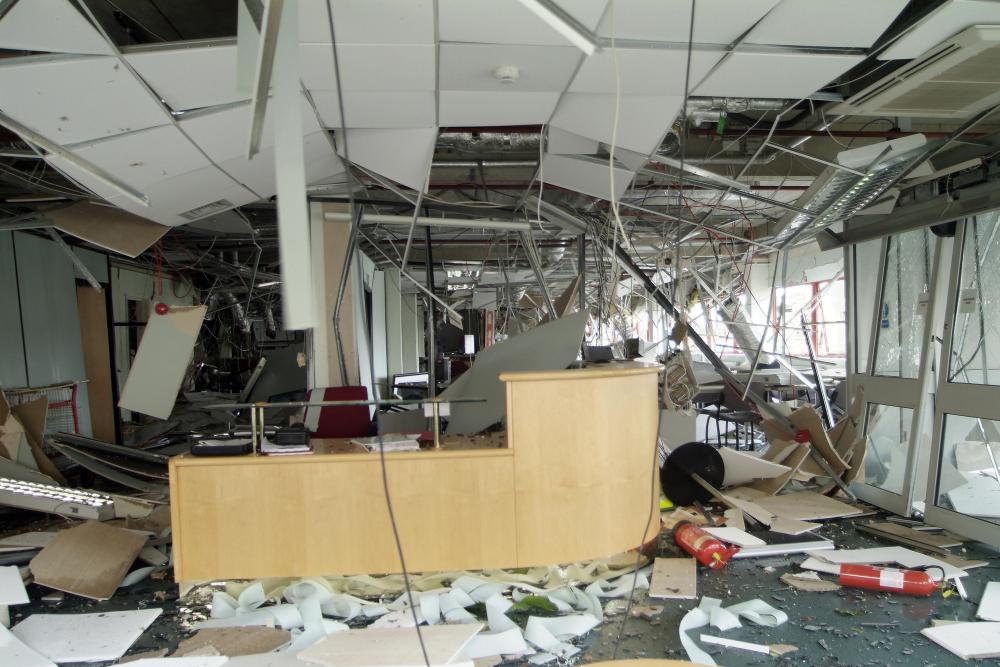What is Tornado Alley?
 Mary McMahon
Mary McMahon
Tornado Alley is a section of the United States which is especially prone to frequent, severe tornadoes, especially when compared to the rest of the United States. Several states in this region are famous for their twisters; the states of Oklahoma and Kansas, for example, are very well-known for their vicious tornadoes. Especially during the time of year when tornadoes are most common, known colloquially as tornado season, Tornado Alley tends to be in the news a lot.
Although the term “Tornado Alley” is frequently thrown around, there is actually some dispute as to which region of the United States should be classified as Tornado Alley. Most maps focus on the Great Plains states between the Rocky Mountains and the Appalachians, with many specifically highlighting the states which are in the direct middle of the United States, while others may wander as far as Florida.

The dispute over the boundaries of Tornado Alley is rooted in arguments about how to define Tornado Alley. If one goes by frequency of tornadoes alone, the map will be much larger, as states like Florida have a lot of tornadoes every year, although they are relatively small. Strength alone will generate a much smaller map, which may create a definition which is too narrow; a region with five really big tornadoes every year might not experience as much damage as an area with 15 smaller tornadoes, for example. As a result, most maps try to incorporate strength, frequency, and records about the amount of damage caused by tornadoes every year.

States in Tornado Alley often have building codes which directly address the frequency of tornadoes, in an attempt to make structures safer. Visitors may notice a larger number of tornado shelters and cellars designed to protect people in the event of a tornado, and building designs are often focused on deflection of and resistance to tornadoes. In addition, insurance may be higher in Tornado Alley states, and schools may be encouraged to hold regular drills and tornado safety classes to ensure that children know what to do in a tornado.

In all the discussion of where Tornado Alley is, some scientists forget to explain why the area is so prone to tornadoes. The frequency of tornadoes in the region is directly linked to the flat landscape, which allows warm humid air from the South to flow up and meet cold dry fronts from the North. In the areas where these flows of air meet, the conditions are ripe for spawning tornadoes.
AS FEATURED ON:
AS FEATURED ON:














Discussion Comments
@Scrbblchick -- Yeah, I don't get why people don't think of the South as being tornado-prone. Maybe it's because our severe weather season, which is late March through early May, doesn't coincide with the Midwest season, which is more late April to the end of June. We get warmer sooner, so our severe weather season starts earlier. And we have two -- one in the spring and one in the fall. They're not as common in the fall, but we have them.
About 10 years ago, there was a big tornado that hit Tuscaloosa, Alabama in mid-December. A co-worker of mine lost her sister in that storm.
And then, there's Dixie Alley. That's the tornado-prone swath of Southeastern states. It includes Arkansas, Tennessee, Mississippi, Louisiana, Alabama and Georgia. There have been two super outbreaks affecting each of these states: one in 1974 and the other in 2011. Both took hundreds of lives, and did millions of dollars of damage to property.
On April 27, 2011, in the 13 or so counties that comprise the Tennessee Valley of North Alabama, over 90 tornado warnings were issued over about 18 hours, and every single county in the area had multiple warnings that day. These were intense, long-track tornadoes, with about 10 of EF4 intensity and above.
@cellmania: The Tri-State Tornado was truly a horrific event. The twister was moving at speeds of over 70 mph and wind speeds between 250 and 300 mph. For most areas, there was absolutely no warning of the approaching storm until it was already there.
The tornado had a 219 mile long path of destruction and, in some places, was a mile wide. It lasted for three hours. A school in West Frankfort, IL was completely leveled. The neighboring town of Parrish was 90% destroyed.
As stated, there were hundreds of people killed. There were 2,000 more that were injured. 15,000 homes were completely destroyed. No storm to this day has matched the devastation that was left by the Tri-State Tornado.
@cellmania: By far, the worst tornado event that the United States has ever experienced was on March 18, 1925. This was the day of the Tri-State Tornado. It is the deadliest tornado ever recorded in the history of America.
This F5 twister raced through Missouri, Indiana, and Illinois leaving a wretched path of destruction and doom. 695 people lost their lives. There was 17 million dollars in property damage. In 1925, that was an unthinkable amount of money. Whole towns were completely wiped off the map.
What is considered to be the worst tornado that the United States has seen?
Tornado Alley is located between the Rocky Mountains and the Appalachian Mountains. Within this area, Texas has the most storms followed by Kansas and then Oklahoma.
One of the Tornado Alley facts is that this geographic area is called Tornado Alley because 90% of the tornadoes that hit the United States fall in this area.
Many believe that the reason why this area sees so many tornadoes has to do with the Canadian frigid air colliding with the moist tropical air of the Gulf of Mexico. This causes an unstable atmosphere that result in severe thunderstorms which is a precursor to tornados forming.
Post your comments